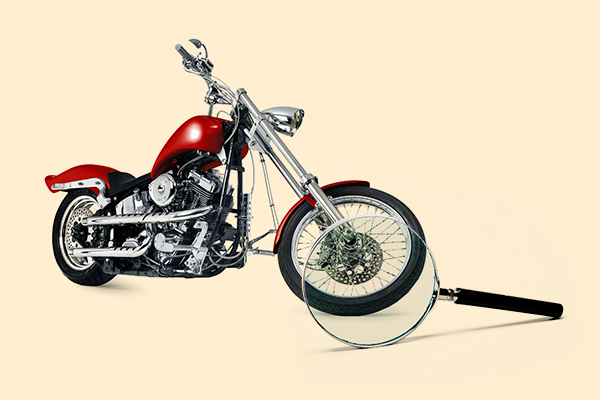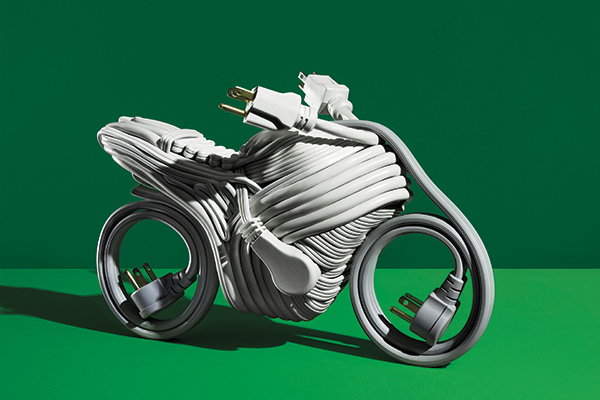Your phone is smart. Your home is smart. Your car is smart. And innovations in motorcycle technology mean that your favorite ride is now smarter—and safer—than ever.
Air bags and anti-lock brakes are just two examples. “The bikes and gear are getting so much smarter that they’re making riders better and riding safer,” says Mitchell Nicholson, who runs the review site Essential Moto. “In the past, it was always you against the bike. Now the bike is actually trying to help you. It’s a cool time to be riding.”
Here are some of Nicholson’s favorite technological advancements in motorcycle safety.
1. Air-Bag Clothing
While air bags are ubiquitous in cars, they don’t always come standard in motorcycles. But you can now buy clothing—vests, jackets and bodysuits—equipped with smart air bags that deploy within milliseconds when a computerized system in the clothing detects that an accident is about to occur. “Air-bag technology used to be just a motorcycle-racing thing, but it’s becoming much more available,” Nicholson says.
2. Anti-lock Braking Systems
Anti-lock braking systems use wheel-speed sensors to determine when, during braking situations, your wheel might lock up—and then prevent that from happening by rapidly reducing and reapplying brake pressure multiple times per second. And the technology works: The fatal-crash rate for motorcycles with optional ABS is 31 percent lower than for the same models without ABS, according to the Insurance Institute for Highway Safety. In addition, motorcycles are increasingly coming equipped with cornering ABS—which uses inertial measurement unit (IMU) data, along with ABS and throttle control, to help keep the bike stable in tight turns and emergency situations.
3. Adaptive Headlights
Headlights have always been a weak point for motorcycles because of their relatively small size and output, says Nicholson. And typical older-model, low-beam motorcycle headlights aren’t great at illuminating what’s ahead while you’re rounding dark corners. Adaptive headlights (available on some bikes, plus as aftermarket devices) use electronic sensors and pivot with the motorcycle as you take a corner—so the light shines where you’re going, as opposed to straight ahead of the bike.
4. Electronic Tire Pressure Monitors
Low tire pressure can lead to sluggish handling, which increases your accident risk. (That’s why it’s always been a good idea to check your tire pressure fairly often, particularly before long rides.) Now, more bikes come equipped with electronic tire pressure monitors that tell you when the pressure is low, so you’ll know to pump up your tires for a safer ride.
5. Automatic Clutch And Shift
In order to ride most motorcycles, you need to be able to use a clutch and shift gears, which may turn off first-timers used to driving an automatic car. But one major manufacturer and several others are now rolling out bikes with automated clutch and shift operation. That way, newer riders don’t have to spend time learning how to shift gears.
6. Vehicle-To-Vehicle Communication
Now under development, vehicle-to-vehicle (V2V) technology—which uses a short-range radio network that allows vehicles to “talk” to each other—is the next frontier in roadway safety. V2V technology would make a motorcycle’s presence known to the cars it’s sharing the road with. “If the car is talking to the bike and vice versa, you won’t have to make as much of an effort to be seen, because both rider and driver are going to be aware of each other,” Nicholson says. While a launch date for this new technology is uncertain, he adds, “I can’t wait for it to happen.”
Another smart idea: affordable motorcycle insurance from GEICO. Get a fast, free quote today.
Read more: The Amazing New Technologies In Motorcycle Helmets
By Mark Yarm









Leave a comment